Conservative interventions for managing urinary incontinence after prostate surgery
- PMID: 37070660
- PMCID: PMC10112049
- DOI: 10.1002/14651858.CD014799.pub2
Conservative interventions for managing urinary incontinence after prostate surgery
Abstract
Background: Men may need to undergo prostate surgery to treat prostate cancer or benign prostatic hyperplasia. After these surgeries, men may experience urinary incontinence (UI). Conservative treatments such as pelvic floor muscle training (PFMT), electrical stimulation and lifestyle changes can be undertaken to help manage the symptoms of UI.
Objectives: To assess the effects of conservative interventions for managing urinary incontinence after prostate surgery.
Search methods: We searched the Cochrane Incontinence Specialised Register, which contains trials identified from the Cochrane Central Register of Controlled Trials (CENTRAL), MEDLINE, MEDLINE In-Process, MEDLINE Epub Ahead of Print, ClinicalTrials.gov, WHO ICTRP and handsearched journals and conference proceedings (searched 22 April 2022). We also searched the reference lists of relevant articles.
Selection criteria: We included randomised controlled trials (RCTs) and quasi-RCTs of adult men (aged 18 or over) with UI following prostate surgery for treating prostate cancer or LUTS/BPO. We excluded cross-over and cluster-RCTs. We investigated the following key comparisons: PFMT plus biofeedback versus no treatment; sham treatment or verbal/written instructions; combinations of conservative treatments versus no treatment, sham treatment or verbal/written instructions; and electrical or magnetic stimulation versus no treatment, sham treatment or verbal/written instructions.
Data collection and analysis: We extracted data using a pre-piloted form and assessed risk of bias using the Cochrane risk of bias tool. We used the GRADE approach to assess the certainty of outcomes and comparisons included in the summary of findings tables. We used an adapted version of GRADE to assess certainty in results where there was no single effect measurement available.
Main results: We identified 25 studies including a total of 3079 participants. Twenty-three studies assessed men who had previously undergone radical prostatectomy or radical retropubic prostatectomy, while only one study assessed men who had undergone transurethral resection of the prostate. One study did not report on previous surgery. Most studies were at high risk of bias for at least one domain. The certainty of evidence assessed using GRADE was mixed. PFMT plus biofeedback versus no treatment, sham treatment or verbal/written instructions Four studies reported on this comparison. PFMT plus biofeedback may result in greater subjective cure of incontinence from 6 to 12 months (1 study; n = 102; low-certainty evidence). However, men undertaking PFMT and biofeedback may be less likely to be objectively cured at from 6 to 12 months (2 studies; n = 269; low-certainty evidence). It is uncertain whether undertaking PFMT and biofeedback has an effect on surface or skin-related adverse events (1 study; n = 205; very low-certainty evidence) or muscle-related adverse events (1 study; n = 205; very low-certainty evidence). Condition-specific quality of life, participant adherence to the intervention and general quality of life were not reported by any study for this comparison. Combinations of conservative treatments versus no treatment, sham treatment or verbal/written instructions Eleven studies assessed this comparison. Combinations of conservative treatments may lead to little difference in the number of men being subjectively cured or improved of incontinence between 6 and 12 months (RR 0.97, 95% CI 0.79 to 1.19; 2 studies; n = 788; low-certainty evidence; in absolute terms: no treatment or sham arm: 307 per 1000 and intervention arm: 297 per 1000). Combinations of conservative treatments probably lead to little difference in condition-specific quality of life (MD -0.28, 95% CI -0.86 to 0.29; 2 studies; n = 788; moderate-certainty evidence) and probably little difference in general quality of life between 6 and 12 months (MD -0.01, 95% CI -0.04 to 0.02; 2 studies; n = 742; moderate-certainty evidence). There is little difference between combinations of conservative treatments and control in terms of objective cure or improvement of incontinence between 6 and 12 months (MD 0.18, 95% CI -0.24 to 0.60; 2 studies; n = 565; high-certainty evidence). However, it is uncertain whether participant adherence to the intervention between 6 and 12 months is increased for those undertaking combinations of conservative treatments (RR 2.08, 95% CI 0.78 to 5.56; 2 studies; n = 763; very low-certainty evidence; in absolute terms: no intervention or sham arm: 172 per 1000 and intervention arm: 358 per 1000). There is probably no difference between combinations and control in terms of the number of men experiencing surface or skin-related adverse events (2 studies; n = 853; moderate-certainty evidence), but it is uncertain whether combinations of treatments lead to more men experiencing muscle-related adverse events (RR 2.92, 95% CI 0.31 to 27.41; 2 studies; n = 136; very low-certainty evidence; in absolute terms: 0 per 1000 for both arms). Electrical or magnetic stimulation versus no treatment, sham treatment or verbal/written instructions We did not identify any studies for this comparison that reported on our key outcomes of interest.
Authors' conclusions: Despite a total of 25 trials, the value of conservative interventions for urinary incontinence following prostate surgery alone, or in combination, remains uncertain. Existing trials are typically small with methodological flaws. These issues are compounded by a lack of standardisation of the PFMT technique and marked variations in protocol concerning combinations of conservative treatments. Adverse events following conservative treatment are often poorly documented and incompletely described. Hence, there is a need for large, high-quality, adequately powered, randomised control trials with robust methodology to address this subject.
Trial registration: ClinicalTrials.gov NCT00632138 NCT02645136 NCT00212264 NCT02226237 NCT02086266 NCT02073721.
Copyright © 2023 The Cochrane Collaboration. Published by John Wiley & Sons, Ltd.
Conflict of interest statement
In accordance with Cochrane's
EEJ: Is currently Assistant Managing Editor for Cochrane Incontinence. However, she did not take part in any aspect of the editorial process for this review. CM: none. AS: none. MIO: is an Editor for Cochrane Urology. However, he did not take part in any aspect of the editorial process for this review. SS: none.
Figures
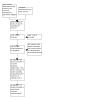
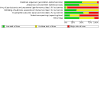
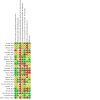
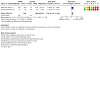
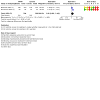
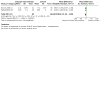
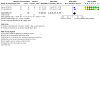
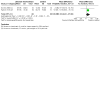
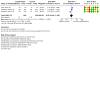
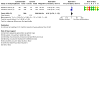
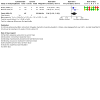
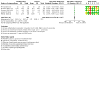
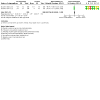
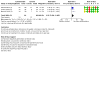
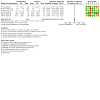
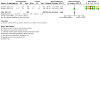
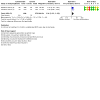
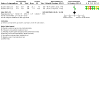
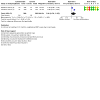
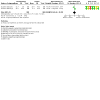
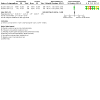
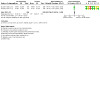
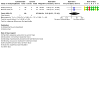
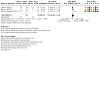
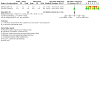
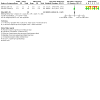
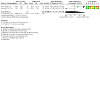
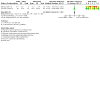
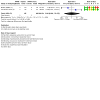
Update of
- doi: 10.1002/14651858.CD014799
References
References to studies included in this review
Ahmed 2012 {published data only}
-
- Ahmed MT, Mohammed AH, Mansour A. Effect of pelvic floor electrical stimulation and biofeedback on the recovery of urinary continence after radical prostatectomy [Radikal prostatektomi sonrası üriner inkontinansın düzelmesinde pelvik tabanda biofeedback ve elektrik stimülasyonunun etkisi]. Turkish Journal of Physical Medicine and Rehabilitation 2012;58(3):170-6. [ACTRN12610000975099]
-
- Omar MT, Mohammed AH, ACTRN12610000975099. Electrical stimulation and biofeedback on urinary incontinence after radical prostatectomy [Effect of pelvic floor exercises, electrical stimulation and biofeedback on urinary incontinence after radical prostatectomy: single blind randomized clinical trial]. anzctr.org.au/ACTRN12610000975099.aspx (first received 05 November 2010).
Bennett 1996 {published data only}
-
- Bennett JK. Electrostimulation for post-prostatectomy urinary incontinence. In: Meeting of the Urodynamics Society; 1997 April 11-13; New Orleans (LA). 1997. [CENTRAL: CN-00316694]
Ceresoli 2002 {published and unpublished data}
-
- Ceresoli A, Kartalas Goumas J, Colombo F, Barbetti E, Dell’Aglio F, Bonacina P, et al. Daily trans cutaneous electrical nerve stimulation (DTENS) after radical perineal prostatectomy: a free cost effective biofeedback technique in the treatment of post operative urinary incontinence (Abstract 426). In: 32nd Annual Meeting of the International Continence Society (ICS); 2002 Aug 28-30; Heidelberg, Germany. 2002:289.
-
- Ceresoli A. Re: study query: daily trans cutaneous electrical nerve stimulation (DTENS) after radical perineal prostatectomy: a free cost effective biofeedback technique in the treatment of post operative urinary incontinence [personal communication]. Email to: E Johnson 12 April 2022.
-
- Ceresoli A. Re: study query: daily trans cutaneous electrical nerve stimulation (DTENS) after radical perineal prostatectomy: a free cost effective biofeedback technique in the treatment of post operative urinary incontinence [personal communication]. Email to: E Johnson 15 March 2022.
Chen 2013 {published data only}
-
- Chen SQ, Zhang XR, Xie Q, Lv YL. The study of comprehensive nursing intervention on urinary incontinence after radical prostatectomy [综合护理干预对前列腺癌根治术后尿失禁影响的研究]. Chinese Journal of Endourology (Electronic Edition) 2013;7(4):304-7.
Filocamo 2005 {published data only}
-
- Del Popolo G, Filocamo MT, Li Marzi V, Cecconi F, Marzocco M, Tosto A, et al. Effectiveness of early pelvic floor rehabilitation treatment for post-prostatectomy incontinence (Abstract 610). In: 35th Annual Meeting of the International Continence Society (ICS); 2005 Aug 28 - Sep 01; Montreal, Canada. 2005. - PubMed
-
- Filocamo MT, Marzi VL, Del Popolo G, Cecconi F, Marzocco M, Tosto A, et al. Effectiveness of early pelvic floor rehabilitation treatment for post-prostatectomy incontinence. European Urology 2005;48(5):734-8. - PubMed
Franke 2000 {published data only}
-
- Franke JJ, Gilbert WB, Grier J, Koch MO, Shyr Y, Smith JA. Early post-prostatectomy pelvic floor biofeedback. Journal of Urology 2000;163(1):191-3. - PubMed
Glazener 2011a {published data only}ISRCTN87696430
-
- Buckley B, Lapitan MC, Glazener C. The effect of urinary incontinence on health utility and health related quality of life in men following prostate surgery (Abstract 542). In: 41st Annual Meeting of the International Continence Society (ICS); 2011 Aug 29 - Sep 02; Glasgow, Scotland. 2011.
-
- Buckley BS, Lapitan MC, Glazener CM, on behalf of the MAPS Trial Group. The effect of urinary incontinence on health utility and health-related quality of life in men following prostate surgery. Neurourology and Urodynamics 2012;31(4):465-9. - PubMed
-
- Dorey G, Glazener C, Buckley B, Cochran C, Moore K. Developing a pelvic floor muscle training regimen for use in a trial intervention. Physiotherapy 2009;95(3):199-208. - PubMed
-
- Glazener C, Boachie C, Buckley B, Cochran C, Dorey G, Grant A, et al. A randomized controlled trial of conservative treatment (pelvic floor muscle training and bladder training) for urinary incontinence in men after prostate surgery (MAPS) (Abstract 200). Neurourology and Urodynamics 2010;29(6):1093-4.
-
- Glazener C, Boachie C, Buckley B, Cochran C, Dorey G, Grant A, et al. Conservative treatment for urinary incontinence in men after prostate surgery (MAPS): two parallel randomised controlled trials. Health Technology Assessment 2011;15(24):1-290. - PubMed
Glazener 2011b {published data only}ISRCTN87696430
-
- Buckley B, Lapitan MC, Glazener C. The effect of urinary incontinence on health utility and health related quality of life in men following prostate surgery (Abstract 542). In: 41st Annual Meeting of the International Continence Society (ICS); 2011 Aug 29 - Sep 02; Glasgow, Scotland. 2011.
-
- Buckley BS, Lapitan MC, Glazener CM, on behalf of the MAPS Trial Group. The effect of urinary incontinence on health utility and health-related quality of life in men following prostate surgery. Neurourology and Urodynamics 2012;31(4):465-9. - PubMed
-
- Dorey G, Glazener C, Buckley B, Cochran C, Moore K. Developing a pelvic floor muscle training regimen for use in a trial intervention. Physiotherapy 2009;95(3):199-209. - PubMed
-
- Glazener C, Boachie C, Buckley B, Cochran C, Dorey G, Grant A, et al. A randomized controlled trial of conservative treatment (pelvic floor muscle training and bladder training) for urinary incontinence in men after prostate surgery (MAPS) (Abstract 200). Neurourology and Urodynamics 2010;29(6):1093-4.
-
- Glazener C, Boachie C, Buckley B, Cochran C, Dorey G, Grant A, et al. Conservative treatment for urinary incontinence in men after prostate surgery (MAPS): two parallel randomised controlled trials. Health Technology Assessment 2011;15(24):1-290. - PubMed
Gomes 2018 {published data only}
-
- Gomes CS, Pedriali FR, Urbano MR, Moreira EH, Averbeck MA, Almeida SH. The effects of Pilates method on pelvic floor muscle strength in patients with post-prostatectomy urinary incontinence: a randomized clinical trial. Neurourology and Urodynamics 2018;37(1):346-53. - PubMed
-
- Gomes CS, NCT02645136. The effects of Pilates in muscle strength of the pelvic floor as treatment of post prostatectomy urinary incontinence [The effects of Pilates method in muscle strength of the pelvic floor as treatment of post prostatectomy urinary incontinence: :[sic] a randomized control trial]. clinicaltrials.gov/show/NCT02645136 (first received 01 January 2016).
Goode 2011 {published data only}
-
- Goode P, Burgio K, Johnson T, Roth D, Clay O, Burkhardt J, et al. Behavioral therapy with or without biofeedback and pelvic floor electrical stimulation for persistent post-prostatectomy incontinence - a randomized controlled trial (Abstract 87). Neurourology and Urodynamics 2009;28(7):681-2. - PMC - PubMed
-
- Goode P, NCT00212264. Conservative treatment of postprostatectomy incontinence. clinicaltrials.gov/show/NCT00212264 (first received 21 September 2005).
-
- Goode PS, Burgio KL, Johnson TM, Roth DL, Clay OJ, Burkhardt JH, et al. Pelvic floor electrical stimulation, biofeedback, and behavioral therapy for persistent post-prostatectomy incontinence (Abstract 1643). Journal of Urology 2009;181(4S):591-2.
Kakihara 2007 {published data only}
-
- Kahihara CT, Ferreira U, Pedro RN, Matheus WE, Netto NR. Early versus delayed physiotherapy in the treatment of post-prostatectomy male urinary incontinence [Intervención fisioterapéutica precoz versus tardía para tratamiento de la incontinencia urinaria masculina post-prostatectomía]. Archivos Espanoles de Urologia 2006;59(8):773-8. - PubMed
-
- Kakihara CT, Sens YA, Ferreira U. Effect of functional training for the pelvic floor muscles with or without electrical stimulation in cases of urinary incontinence following radical prostatectomy [Efeito do treinamento funcional do assoalho pélvico associado ou não à eletroestimulação na incontinência urinária após prostatectomia radical]. Revista Brasileira de fisioterapia 2007;11(6):481-6.
Laurienzo 2018 {published data only}
-
- Laurienzo C, Magnabosco W, Jabur F, Gameiro M, Yamamoto H, Guerra R, et al. Post-prostatectomy urinary incontinence and erectile dysfunction: the role of pelvic floor rehabilitation (Abstract 527). Neurourology and Urodynamics 2015;34(S3):S449-50.
-
- Magnabosco WJ, Amaro JL, Andrade CL, Jabur F, NCT02226237. Effectiveness of physiotherapy to treat the urinary incontinence and erectile dysfunction post retropubic prostatectomy [Urinary incontinence and erectil [sic] dysfunction after radical prostatectomy: a randomized controlled trial comparing pelvic muscle exercises with or without electrical stimulation]. clinicaltrials.gov/ct2/show/NCT02226237 (first received 27 August 2014).
Manassero 2007 {published data only}
-
- Manassero F, Traversi C, Ales V, Pistolesi D, Panicucci E, Valent F, et al. Contribution of early intensive prolonged pelvic floor exercises on urinary continence recovery after bladder neck-sparing radical prostatectomy: results of a prospective controlled randomized trial. Neurourology and Urodynamics 2007;26(7):985-9. - PubMed
-
- Manassero F. Re: study query: contribution of early intensive prolonged pelvic floor exercises on urinary continence recovery after bladder neck-sparing radical prostatectomy: results of a prospective controlled randomized trial [personal communication]. Email to: E Johnson 28 February 2022. - PubMed
Moore 1999a {published data only}
-
- Moore KN, Griffiths D, Hughton A. Urinary incontinence after radical prostatectomy: a randomised controlled trial comparing pelvic muscle exercises with or without electrical stimulation. BJU International 1999;83(1):57-65. - PubMed
-
- Moore KN, Griffiths DJ, Hughton A. A randomised controlled trial of pelvic muscle exercises or pelvic muscle exercises plus electrical stimulation for post radical prostatectomy urinary incontinence (Abstract 89). Neurourology and Urodynamics 1998;17(4):424-6.
Moore 2008 {published and unpublished data}
-
- Moore K. Re: study query: return to continence after radical retropubic prostatectomy: a randomized trial of verbal and written instructions versus therapist-directed pelvic floor muscle therapy [personal communication]. Email to: E Johnson 24 January 2022. - PubMed
-
- Moore KN, Valiquette L, Chetner MP, Byrniak S, Herbison GP. Return to continence after radical retropubic prostatectomy: a randomized trial of verbal and written instructions versus therapist-directed pelvic floor muscle therapy. Urology 2008;72(6):1280-6. - PubMed
Morihiro 2011 {published data only}
-
- Morihiro N, Masatsugu I, Shinji K, Kenichi T, Kazumasa M, Shiro B. Effectiveness of sacral surface therapeutic electrical stimulation (SSTES) on early recovery of urinary incontinence after laparoscopic radical prostatectomy: a prospective study (Abstract 64). Neurourology and Urodynamics 2011;30(6):889-90.
Pedriali 2016 {published data only}
-
- Pedriali FR, Gomes CS, Soares L, Urbano MR, Moreira EC, Almeida SH. The efficacy of pilates compared to pelvic floor muscle training associated with electrical stimulation in the recovery of post-prostatectomy urinary incontinence: a randomized controlled trial (Abstract 306). Neurourology and Urodynamics 2014;33(6):742-3.
-
- Pedriali FR, Gomes CS, Soares L, Urbano MR, Moreira, EC, Averbeck MA, et al. Is pilates as effective as conventional pelvic floor muscle exercises in the conservative treatment of post-prostatectomy urinary incontinence? A randomised controlled trial. Neurourology and Urodynamics 2016;35(5):615-21. - PubMed
-
- Pedriali FR, NCT02086266. The efficacy of Pilates in the recovery of post-prostatectomy urinary incontinence [The efficacy of Pilates compared to pelvic floor muscle training associated with electrical stimulation in the recovery of post-prostatectomy urinary incontinence: a randomized clinical trial]. clinicaltrials.gov/show/NCT02086266 (first received 13 March 2014).
Robinson 2009 {published and unpublished data}
-
- Robinson J, Weiss R, Avi-Itzhak T, McCorkle R. Pilot-testing of a theory-based pelvic floor training intervention for radical prostatectomy patients (Abstract 88). Neurourology and Urodynamics 2009;28(7):682-3.
-
- Robinson J. Re: study query: systematic pelvic floor training for lower urinary tract symptoms post-prostatectomy: a randomized clinical trial [personal communication]. Email to: E Johnson 9 December 2021.
Sanchez‐Salas 2021 {published and unpublished data}
-
- Sanchez-Salas R, Sivaraman A, Tourinho-Barbosa R, Pasquali C, Candela L, Marra G, et al. The improve trial: surgical technique remains the most important factor associated with recovery of urinary continence after radical prostatectomy (Abstract LBA02-08). Journal of Urology 2021;206(Suppl 3):e1178. [DOI: 10.1097/JU.0000000000002149.08] - DOI
-
- Tourinho R. Re: study query: the improve trial: surgical technique remains the most important factor associated with recovery of urinary continence after radical prostatectomy (Abstract number LBA02-08) [personal communication]. Email to: E Johnson 9 June 2022.
-
- Tourinho-Barbosa R, Sivaraman A, Pasquali C, Marra G, Candela L, Rodriguez-Sanchez L, et al. Surgical technique is the major determinant of quality of life for patients recovering continence post-radical prostatectomy (Abstract MP50-07). Journal of Urology 2021;206(Suppl 3):e888. [DOI: 10.1097/JU.0000000000002076.07] - DOI
Sangalli 2021 {published data only}
-
- Sangalli MN, Vota P, Zanoni M, Toia G, Mazzieri C, Mandressi A, et al. Randomized trial comparing urinary continence rates between pelvic muscles exercises with and without trans-pelvic magnetic stimulation after robotic assisted radical prostatectomy (Abstract PD61-05). Journal of Urology 2021;206(Suppl 3):e1068. [DOI: 10.1097/JU.0000000000002098.05] - DOI
Serdà 2014 {published data only}
-
- Serdà BC, Marcos‐Gragera R. Urinary incontinence and prostate cancer: a progressive rehabilitation program design. Rehabilitation Nursing 2014;39(6):271-80. - PubMed
Strojek 2021 {published data only}
-
- Strojek K, Weber-Rajek M, Strączyńska A, Piekorz Z, Pilarska B, Jarzemski P, et al. Randomized-controlled trial examining the effect of pelvic floor muscle training in the treatment of stress urinary incontinence in men after a laparoscopic radical prostatectomy pilot study. Journal of Clinical Medicine 2021;10(13):2946. [DOI: 10.3390/jcm10132946] - DOI - PMC - PubMed
Van Kampen 2000 {published data only}
-
- Van Kampen M, De Weerdt W, Van Poppel H, Baert L. Urinary incontinence after radical prostatectomy can be treated by pelvic floor reeducation and predicted by measuring urine loss at catheter withdrawal: a controlled study (Abstract 250). In: 29th Annual Meeting of the International Continence Society (ICS); 1999 Aug 23-26; Denver (CO). 1999.
-
- Van Kampen M, De Weerdt W, Van Poppel H, De Ridder D, Feys H, Baert L. The effect of physiotherapy on the duration and the degree of incontinence after radical prostatectomy: a randomised controlled study. In: Male Incontinence and Impotence [PhD thesis]. Leuven, Belgium: University of Leuven, 1998:38-58.
-
- Van Kampen M, De Weerdt W, Van Poppel H, De Ridder D, Feys H, Baert L. The efficacy of physiotherapy on the degree and the duration of incontinence after radical prostatectomy: a randomised controlled study. In: 28th Annual Meeting of the International Continence Society (ICS); 1998 Sept 14-17; Jerusalem, Israel. 1998.
-
- Van Kampen M, De Weerdt WV, Van Poppel H, De Ridder D, Feys H, Baert L. Effect of pelvic-floor re-education on duration and degree of incontinence after radical prostatectomy: a randomised controlled trial. Lancet 2000;355(9198):98-102. - PubMed
Yamanishi 2010 {published data only}
-
- Yamanishi K, Mizuno T, Sakakibara R, Uchiyama T, Ito T, Yamamoto T, et al. A randomized, placebo-controlled, double-blind study of electrial stimulation with pelvic floor muscle training for the treatment of urinary incontinence after radical prostatectomy (Abstract 30). Neurourology and Urodynamics 2006;25(6):545-6.
-
- Yamanishi T, Mizuno T, Watanabe M, Honda M, Yoshida KI. Randomized, placebo controlled study of electrical stimulation with pelvic floor muscle training for severe urinary incontinence after radical prostatectomy. Journal of Urology 2010;184(5):2007-12. [DOI: 10.1016/j.juro.2010.06.103] - DOI - PubMed
Zaidan de Barros 2014 {published and unpublished data}
-
- Zaidan P, Muller VS, da Silva EB. Electrical stimuation, pelvic floor muscle exercises, and urinary incontinence in post-prostatectomy patients: controlled randomized double-blind experiment. International Journal of Current Research 2016;8(11):41859-63.
-
- Zaidan P. Re: study query: electrical stimulation, pelvic floor muscle exercises, and urinary incontinence in post-prostatectomy patients: controlled randomized double-blind experiment [personal communication]. Email to: E Johnson 4 May 2022.
-
- Barros PZ, da Silva EB. Electrical stimulation, pelvic floor training and urinary incontinence in post prostatectomy: randomised controlled trial, double-blind (Abstract 210). In: 44th Annual Meeting of the International Continence Society (ICS); 2014 Oct 20-24; Rio de Janeiro, Brazil. 2014.
-
- Barros PZ, NCT02073721. The importance of electrical stimulation as a treatment for urinary incontinence in patients prostatectomy (UI) [The importance of electrical stimulation as a treatment for urinary incontinence in patients undergoing prostatectomy to exercise the pelvic floor muscles (MAPs): randomised controlled trial, double blind]. clinicaltrials.gov/show/NCT02073721 (first received 27 February 2014).
References to studies excluded from this review
Abbinante 2012 {published data only}
-
- Abbinante M, Crivellaro S, Palazzetti A, Tosco L, Frea B. Efficacy of ultrasound-guided pelvic muscle training (Abstract 45). Neurourology and Urodynamics 2012;31(S1):S35.
-
- Crivellaro S, Abbinante M, Palazzetti A, Tosco L, Frea B. Efficacy of ultrasound-guided pelvic muscle training (Abstract 285). European Urology Supplements 2012;11(1):e285-a.
Abel 1996 {published data only}
-
- Abel I, Ottesen B, Fischer-Rasmussen W, Lose G. Maximal electrical stimulation of the pelvic floor in the treatment of urge incontinence: a placebo controlled study (Abstract 16). Neurourology and Urodynamics 1996;15(4):283-4.
Allameh 2021 {published data only}
-
- Allameh F, Rayegani SM, Razzaghi M, Abedi AR, Rahavian A, Javadi A, et al. Comparison of the effect of the pelvic floor muscle biofeedback prior or postradical prostatectomy on urinary incontinence: a randomized controlled trial. Turkish Journal of Urology 2021;47(5):434-41. [DOI: 10.5152/tud.2021.21096] - DOI - PMC - PubMed
Amend 2018 {published data only}
-
- Amend B, DRKS00014311. Pilot study to assess videocontrolled biofeedback in physiotherapeutic rehabiliation of stress urinary incontinence after radical prostatectomy in prostate cancer patients. www.drks.de/DRKS00014311 (first received 12 April 2018).
Arruda 2007 {published data only}
-
- Arruda RM, Sousa GO, Castro RA, Sartori MG, Baracat, EC, Girão MJ. Detrusor overactivity: comparative study among oxybutynin, functional electrostimulation and pelvic floor muscle training. A randomized clinical trial [Hiperatividade do detrusor: comparação entre oxibutinina, eletroestimulação funcional do assoalho pélvico e exercícios perineais. Estudo randomizado]. Revista Brasileira de Ginecologia e Obstetricia 2007;29(9):452-8.
Au 2020 {published data only}
-
- Au D, Matthew AG, Alibhai SM, Jones JM, Fleshner NE, Finelli A, et al. Pfilates and hypopressives for the treatment of urinary incontinence after radical prostatectomy: results of a feasibility randomized controlled trial. PM&R: Journal of Injury, Function, and Rehabilitation 2020;12(1):55-63. - PubMed
Aydın Sayilan 2018 {published data only}
Azevedo 2020 {published data only}
-
- Azevedo C, RBR-3jm5y2. Control of urinary loss in men undergoing prostate surgery [Controle da perda urinária em homens submetidos à cirurgia de próstata] [Effectiveness of integrative and complementary practices associated with pelvic muscle training to control urinary incontinence after radical prostatectomy: randomized clinical trial [Efetividade das práticas integrativas e complementares associadas ao treinamento muscular pélvico para o controle da incontinência urinária após prostatectomia radical: ensaio clínico randomizado]]. ensaiosclinicos.gov.br/rg/RBR-3jm5y2 (first received 24 July 2020).
Baroni 2013 {published data only}
-
- Baroni M, Lorenzetti R, Renzi C, Brizzi A, Branchini W, Altavilla MG, et al. Approach HTA (health technology assessment) to treat urinary incontinence after radical prostatectomy (Abstract 23). Neurourology and Urodynamics 2013;32(S1):S20.
Bernier 2008 {published data only}
-
- Bernier F. Pelvic Floor Muscle Retraining: Quantitative, Experimental, Randomized Pilot Study [PhD thesis]. Charlottesville, VA (USA): University of Virginia, 2008.
-
- Bernier F. Pelvic floor muscle retraining: quantitative, experimental, randomized pilot study. In: 39th Annual Conference of the Society of Urologic Nurses and Associates (SUNA); 2008 Oct 3-6; Philadelphia (PA). 2008.
Bourcier 1994 {published data only}
-
- Bourcier A, Juras J. Randomised study comparing physiotherapy and pelvic floor rehabilitation. In: 24th Annual Meeting of the International Continence Society (ICS); 1994 Aug 30 - Sep 02; Prague, Czech Republic. 1994.
Bryant 2001 {published data only}
-
- Bryant CM, Dowell CJ, Fairbrother G. Final results of a randomised trial of a caffeine reduction intervention and descriptive analysis of caffeine behaviours (Abstract 303). In: 31st Annual Meeting of the International Continence Society (ICS); 2001 Sept 18-21; Seoul, Korea. 2001.
Burnett 2012 {published data only}
-
- Burnett AL, NCT01718704. Viberect penile vibratory stimulation to enhance recovery of erectile function and urinary continence post-prostatectomy [Study of non-invasive Viberect ® penile vibratory stimulation regimen to enhance recovery of erectile function/rigidity and urinary control/continence after nerve sparing radical prostatectomy (RP) for clinically localized prostate cancer]. clinicaltrials.gov/show/NCT01718704 (first received 31 October 2012).
Ceresoli 1995 {published data only}
-
- Ceresoli A, Zanetti G, Trinchieri A, Seveso M, Del Nero A, Meligrana C, et al. Stress urinary incontinence after radical perineal prostatectomy [Incontinenza urinaria da stress dopo prostatectomy radicale perineale]. Archivio Italiano di Urologia e Andrologia 1995;67(3):207-10. - PubMed
Feng 2000 {published data only}
-
- Feng MI, Parekh A, Bremner H, Kirages D, Yang R, Kaswick J, et al. The role of pelvic floor exercise on post-prostatectomy incontinence (Poster P15-3). Journal of Endourology 2000;14(Suppl 1):A77. - PubMed
Feng 2022 {published data only}
-
- Feng X, Lv J, Li M, Lv T, Wang S. Short-term efficacy and mechanism of electrical pudendal nerve stimulation versus pelvic floor muscle training plus transanal electrical stimulation in treating post-radical prostatectomy urinary incontinence. Urology 2022;160:168-75. [DOI: 10.1016/j.urology.2021.04.069] - DOI - PubMed
-
- NCT02599831. Efficacy of electrical pudendal nerve stimulation for patients with post prostatectomy urinary incontinence. clinicaltrials.gov/ct2/show/NCT02599831 (first received 09 November 2015).
Floratos 2002 {published data only}
-
- Floratos DL, Sonke GS, Rapidou CA, Alivizatos GJ, Deliveliotis C, Constantinides CA, et al. Biofeedback vs verbal feedback as learning tools for pelvic muscle exercises in the early management of urinary incontinence after radical prostatectomy. BJU International 2002;89(7):714-9. - PubMed
Fode 2015 {published data only}
-
- Fode M, Sønksen J. Penile vibratory stimulation in the treatment of post-prostatectomy incontinence: a randomized pilot study. Neurourology and Urodynamics 2015;34(2):117-22. - PubMed
Franke 1998 {published data only}
-
- Franke JJ, Grier J, Kock MO, Smith JA. Biofeedback-enhanced pelvic floor exercises in the early post-prostatectomy period. Journal of Urology 1998;159(5):37.
Griebling 1999 {published data only}
-
- Griebling TL, Kreder KJ, Sueppel CA, See WA. Timing of biofeedback and pelvic floor muscle exercise training for men undergoing radical prostatectomy (Abstract 322). In: 29th Annual General Meeting of the International Continence Society (ICS); 1999 Aug 22-26; Denver (CO). 1999.
-
- Griebling TL, Kreder KJ, Sueppel CA, See WA. Timing of pelvic floor muscle strenghthening exercises and return of continence in post prostatectomy patients (Abstract 322). In: 29th Annual General Meeting of the International Continence Society (ICS); 1999 Aug 22-26; Denver (CO). 1999.
Heerey 2016 {published data only}
-
- Heerey R, Richardson T, Costello A. The impact of a combined exercise intervention on persistent urinary incontinence after radical prostatectomy: a pilot randomised controlled trial (Abstract 088). BJU International 2016;118(S1):39.
Heydenreich 2016 {published and unpublished data}
-
- Heydenreich M, Puta C, Gabriel H, Zermann DH. Oscillating pole treatment-a new effective treatment option for postprostatectomy urinary incontinence (Abstract ID 0546). Oncology Research and Treatment 2016;39(Suppl 1):37. [DOI: 10.1159/000444354] - DOI
-
- Heydenreich M, Zermann DH. Oscillating pole therapy - the best option to treat urinary incontinence after radical prostatectomy? - Follow-up-data (Abstract V49). Oncology Research and Treatment 2016;39(Suppl 3):10. [DOI: 10.1159/000449050] - DOI
Heydenreich 2020 {published and unpublished data}
-
- Heydenreich M, Puta C, Gabriel H, Zermann DH. Einfluss „aktiver schwingungen" auf die funktion des kontinenzapparats - ein neuer ansatz zur behandlung der harninkontinenz nach radikaler prostatektomie (Abstract V27.1) [Influence of "active vibrations" on the function of the continence apparatus - a new approach to the treatment of urinary incontinence after radical prostatectomy. [For information only, English title translated via Google Translate™]]. Der Urologe 2015;54(Suppl 1):83-4.
-
- Heydenreich M, Walke GR, Zermann DH. Oscillation rod therapy - the better way to treat urinary incontinence after prostatectomy. Update 2017 (Abstract 265). Oncology Research and Treatment 2018;41(Suppl 1):153.
-
- Heydenreich M, DRKS00011028. Oscillating rod treatment - an improved approach for post-prostatectomy urinary incontinence. A prospective randomised controlled trial. drks.de/DRKS00011028 (first received 06 September 2016).
Hsu 2016 {published data only}
-
- Hsu LF, Liao YM, Lai FC, Tsai PS. Beneficial effects of biofeedback-assisted pelvic floor muscle training in patients with urinary incontinence after radical prostatectomy: a systematic review and metaanalysis. International Journal of Nursing Studies 2016;60:99-111. - PubMed
Jackson 1996 {published data only}
-
- Jackson J, Emerson L, Johnston B, Wilson J, Morales A. Biofeedback: a noninvasive treatment for incontinence after radical prostatectomy. Urologic Nursing 1996;16(2):50-4. - PubMed
Jalalinia 2020 {published data only}
-
- Rai M, Varaei S, IRCT2014090519049N1. The effect of pelvic-floor muscles exercises and in-ward routine trainings on urinary incontinence and quality of life among post-prostatectomy patients [Exploring the effect of performing pelvic floor muscles strengthening exercises on post-prostatectomy patients’ urinary incontinence and quality of life]. en.irct.ir/trial/17138 (first received 14 November 2014).
Joseph 2000 {published data only}
-
- Joseph AC, Chang MK. Comparison of behavior therapy methods for urinary incontinence following prostate surgery: a pilot study. Urologic Nursing 2000;20(3):203-4. - PubMed
Karlsen 2021 {published data only}
-
- Karlsen RV, Johansen C, NCT02103088. Sexual and urological rehabilitation to men operated for prostate cancer and their partners (PROCAN) [PROCAN: sexual and urological rehabilitation to men operated for prostate cancer and their partners: a randomized controlled intervention study]. clinicaltrials.gov/show/NCT02103088 (first received 03 April 2014).
Kaya 2021 {published data only}
-
- Kaya S, NCT04804839. Comparison of the effectiveness of different conservative treatment protocols in postprostatectomy urinary incontinence [Comparison of the effectiveness of different conservative treatment protocols in individuals with symptom of postprostatectomy urinary incontinence: a randomized controlled trial]. clinicaltrials.gov/show/NCT04804839 (first received 18 March 2021).
Kim 2009 {published data only}
-
- Kim YH, Hwang EG, Shin JH, Kim YW, Lim JS, Na YG, et al. Effect of extracorporeal magnetic innervation pelvic floor therapy (EXMI) on urinary incontinence after radical prostatectomy (Abstract UP-1.180). Urology 2009;74(4 Suppl):S227.
-
- Koo D, So SM, Lim JS. Effect of extracorporeal magnetic innervation (ExMI) pelvic floor therapy on urinary incontinence after radical prostatectomy [근치적 전립선적출술 후 요실금에 대한 체외자기장치료의 효]. Korean Journal of Urology 2009;50(1):23-7.
Liu 2008 {published data only}
-
- Liu F, Yao LP, Mai HX, Liu HL, Yuan JL, Wang FL, et al. Extracorporeal magnetic innervation in the treatment of urinary incontinence after radical prostatectomy. Journal of Clinical Rehabilitative Tissue Engineering Research 2008;12(17):3289-92.
Marchiori 2010 {published data only}
-
- Marchiori D, Bertaccini A, Manferrari F, Ferri C, Martorana G. Pelvic floor rehabilitation for continence recovery after radical prostatectomy: role of a personal training re-educational program. Anticancer Research 2010;30(2):553-6. - PubMed
Mariotti 2009 {published data only}
-
- Mariotti G, Sciarra A, Gentilucci A, Salciccia S, Alfarone A, Pierro GD, et al. Early recovery of urinary continence after radical prostatectomy using early pelvic floor electrical stimulation and biofeedback associated treatment. Journal of Urology 2009;181(4):1788-93. - PubMed
-
- Sciarra A, Salciccia S, Gentilucci A, Alfarone A, Di Pierro GB, Mariotti G, et al. Early recovery of urinary continence after radical prostatectomy using early pelvic floor electric stimulation and biofeedback associated treatment (Abstract 1883). Journal of Urology 2009;181(4S):680. - PubMed
-
- Sciarra A, Salciccia S, Gentilucci A, Alfarone A, Mariotti G, Cattarion S, et al. Early recovery of urinary continence after radical prostatectomy using early pelvic floor electric stimulation and biofeedback associated treatment (Abstract 412). European Urology Supplements 2009;8(4):223.
Mathewson‐Chapman 1997 {published data only}
-
- Mathewson-Chapman M. Pelvic muscle exercise/biofeedback for urinary incontinence after prostatectomy: an education program. Journal of Cancer Education 1997;12(4):218-23. - PubMed
Meng 2012 {published data only}
-
- Meng X, Meng XM, Yang XH. The effect of early rehabilitation traning on urinary in continence after prostatectomy with laparospic in high-risk elder patients [早期康复训练对老年高危患者腹腔镜下前列腺癌根治术后尿失禁的影响]. Nursing Practice and Research 2012;9(5):24-6.
Montazeri 2020 {published data only}
-
- Montazeri S, IRCT20200429047243N1. Comparison the effect of pelvic floor muscle biofeedback prior or post radical prostatectomy on urinary incontinence [Comparison the effect of pelvic floor muscle biofeedback prior or post radical prostatectomy on urinary incontinence: a randomized clinical trial]. irct.ir/trial/47616 (first received 05 May 2020).
Moore 1999b {published data only}
-
- Moore KN, Dorey GF. Conservative treatment of urinary incontinence in men: a review of the literature. Physiotherapy 1999;85(2):77-87.
Nehra 2001 {published data only}
-
- Nehra A, Rovner E, Wein A, Lange P, Ellis W, Keane T, et al. Interim analysis of a multi-center study of extracorporeal magnetic innervation (ExMI ) for the treatment of urinary incontinence following radical prostatectomy (Abstract 37). Neurourology and Urodynamics 2001;20(4):430-1.
Novick 2014 {published data only}
-
- Novick BJ, Angie M, Walker E, Kitay R, Monday K, Albert NM. The effect of intensive education on urinary incontinence following radical prostatectomy: a randomized control trial. Urologic Nursing 2014;34(5):246-51. - PubMed
Nowak 2007 {published data only}
-
- Nowak M, Jordan M, Haberl S, Herwig R, Kuehhas F, Brausi M, et al. Prospective study of extracorporeal magnetic innervation pelvic floor therapy (EXMI) versus standard pelvic floor training following radical prostatectomy: impact on timing and magnitude of recovery of continence (Abstract 482). European Urology Supplements 2007;6(2):143.
Oh 2020 {published data only}
-
- Byun SS, Kang M, Lee DO, NCT02485665. Efficacy of extracorporeal biofeedback device for post-prostatectomy incontinence [Efficacy of personalized extracorporeal biofeedback device for pelvic floor muscle training on post-prostatectomy incontinence]. clinicaltrials.gov/show/NCT02485665 (first received 30 June 2015).
-
- Kim JK, Oh JJ, Lee H, Lee S, Hong SK, Lee SE, et al. Effect of personalized extracorporeal biofeedback device for pelvic floor muscle training on urinary incontinence after robot-assisted radical prostatectomy: a randomized controlled trial (Abstract PD40-03). Journal of Urology 2019;201(Suppl 4):e738-9. - PubMed
-
- Oh JJ, Kim JK, Lee H, Lee S, Jin Jeong S, Kyu Hong S, et al. Effect of personalized extracorporeal biofeedback device for pelvic floor muscle training on urinary incontinence after robot-assisted radical prostatectomy: a randomized controlled trial. Neurourology and Urodynamics 2020;39(2):674-81. - PubMed
Oldham 2001 {published data only}
-
- Oldham JA, ISRCTN56654882. An evaluation of pelvic floor muscle exercises and electrical muscle stimulation in patients with stress incontinence [An evaluation of pelvic floor muscle exercises and electrical muscle stimulation in patients with stress incontinence: a randomised, double-blind, controlled trial]. isrctn.com/ISRCTN56654882 (first received 01 March 2001).
Opsomer 1994 {published data only}
-
- Opsomer RJ, Castille Y, Abi-Aad A, Van Cangh PJ. Urinary incontinence after radical prostatectomy: is professional pelvic floor training necessary? (Abstract 26). Neurourology and Urodynamics 1994;13(4):382-4.
Overgård 2008 {published data only}
-
- Angelsen A, Milssen S, Overgård M, Lydersen S, Mørkved S. Does physiotherapist-guided pelvic floor muscle training increase the quality of life in patients after radical prostatectomy? A randomized clinical study (Abstract 733). In: 42nd Annual Meeting of the International Continence Society (ICS); 2012 Oct 15-19; Beijing, China. 2012. - PubMed
-
- Mørkved S, Overgård M, Lydersen S, Angelsen A. Does pelvic floor muscle training with follow up instructions by a physiotherapist reduce urinary incontinence after radical prostatectomy? A randomised controlled trial (Abstract 15). Neurourology and Urodynamics 2008;27(7):587-8.
-
- Mørkved S, NCT00239824. Pelvic floor muscle training to treat urinary incontinence after radical prostatectomy [Urinary incontinence after radical prostatectomy. - Effect of pelvic floor muscle training. A randomised controlled trial]. clinicaltrials.gov/show/NCT00239824 (first received 17 October 2005).
-
- Nilssen SR, Mørkved S, Overgård M, Lydersen S, Angelsen A. Does physiotherapist-guided pelvic floor muscle training increase the quality of life in patients after radical prostatectomy? A randomized clinical study. Scandinavian Journal of Urology and Nephrology 2012;46(6):397-404. - PubMed
-
- Overgård M, Angelsen A, Lydersen S, Mørkved S. Does physiotherapist-guided pelvic floor muscle training reduce urinary incontinence after radical prostatectomy?: A randomised controlled trial. European Urology 2008;54(2):438-48. - PubMed
Pané‐Alemany 2021 {published data only}
-
- Pané-Alemany R, Ramírez I, NCT03587402. Effects of transcutaneous perineal stimulation versus anal stimulation [Effects of transcutaneous perineal stimulation versus anal stimulation on urinary incontinence after radical prostatectomy]. clinicaltrials.gov/show/NCT03587402 (first received 16 July 2018).
-
- Pané-Alemany R, Ramírez-García I, Carralero-Martínez A, Blanco-Ratto L, Kauffmann S, Sánchez E. Efficacy of transcutaneous perineal electrostimulation versus intracavitary anal electrostimulation in the treatment of urinary incontinence after a radical prostatectomy: randomized controlled trial study protocol. BMC Urology 2021;21(1):1-6. - PMC - PubMed
-
- Pané‐Alemany R, Ramírez‐García I, Kauffmann S, Blanco‐Ratto L, Carralero‐Martínez A, Sánchez Ruiz E. Efficacy of transcutaneous perineal electrostimulation versus intracavitary anal electrostimulation in the treatment of urinary incontinence after a radical prostatectomy: randomized controlled trial. Neurourology and Urodynamics 2021;40(7):1761-9. - PubMed
Park 2012 {published data only}
-
- Park SW, Kim TN, Nam JK, Ha HK, Shin DG, Lee W, et al. Recovery of overall exercise ability, quality of life, and continence after 12-week combined exercise intervention in elderly patients who underwent radical prostatectomy: a randomized controlled study. Urology 2012;80(2):299-306. - PubMed
-
- Park SW, Park CS, Kim TN, Lee W, Nam JK, Lee SD, et al. The effects of a 12-week's combined exercise intervention on physical function and mental health after radical prostatectomy in elderly patients with prostate cancer: a prospective, randomised controlled study (Abstract 1309). Journal of Urology 2011;185(4S):e524.
Parsons 2004 {published data only}
-
- Parsons M, Mantle J, Cardozo L, Hextall A, Boos K, Bidmead J. A single blind, randomised, controlled trial of pelvic floor muscle training with home electrical stimulation in the treatment of urodynamic stress incontinence (Abstract 296). In: 34th Annual Meeting of the International Continence Society (ICS) and the International UroGynecological Association (IUGA); 2004 Aug 23-27; Paris, France. 2004.
Perissinotto 2008 {published data only}
-
- Perissinotto MC, D'Ancona CA, Campos RM, Corria Lucio A, Silva W. Physiotherapeutic for treatment of post radical prostatectomy urinary incontinence (Abstract 265). In: 38th Annual Meeting of the International Continence Society (ICS); 2008 Oct 20-24; Cairo, Egypt. 2008.
Radzimińska 2019 {published data only}
-
- Radzimińska A, Strojek K, NCT04172519. Pelvic floor muscles training after radical prostatectomy [Evaluation of the effectiveness of pelvic floor muscles training for urinary incontinence after radical prostatectomy. Pilot study]. clinicaltrials.gov/show/NCT04172519 (first received 21 November 2019).
Robinson 2008 {published and unpublished data}
-
- Robinson J. Re: study query: systematic pelvic floor training for lower urinary tract symptoms post-prostatectomy: a randomized clinical trial [personal communication]. Email to: E Johnson 9 December 2021.
-
- Robinson JP, Bradway CW, Nuamah I, Pickett M, McCorkle R. Systematic pelvic floor training for lower urinary tract symptoms post-prostatectomy: a randomized clinical trial. Internatonal Journal of Urological Nursing 2008;2(1):3-13.
Sacco 2011 {published data only}
-
- Sacco E, Tienforti D, D'Addessi A, Racioppi M, Gulino G, Pinto F, et al. Efficacy of a supervised, affordable program of perioperative pelvic floor muscle training in improving the recovery of continence after radical prostatectomy: a randomized controlled trial (Abstract 138). Neurourology and Urodynamics 2011;30(6):995-7.
Salinas Casado 1996 {published data only}
-
- Casado JS, Chamorro MV, Mohamed SS, Bravo de Rueda C, Aristizabal JM, Resel Estevez L. Results of electric stimulation in the treatment of post-prostatectomy urinary incontinence [Resultados de la electroestimulacion en el tratamiento de la incontinencia urinaria post-prostatectomia]. Actas Urologicas Espanolas 1996;20(6):544-50. - PubMed
Santos 2017 {published data only}
Seleme 2008 {published data only}
-
- Seleme M, Ribeiro V, Moreno A, Berghmans B, Bendhack M. Efficacy of physiotherapy after radical prostatectomy (Abstract 256). In: 38th Annual Meeting of the International Continence Society (ICS); 2008 Oct 20-24; Cairo, Egypt. 2008.
Simeit 2010 {published data only}
-
- Simeit R, Deck R, Drechsler T, Fiedrich M, Schönrock-Nabulsi P. Quality of life and impact of incontinence in male patients with prostate carcinoma after radical retropubic prostatectomy [Die lebensqualität und die bedeutung der inkontinenz bei männern mit prostatakarzinom nach radikaler retropubischer prostatektomie]. Rehabilitation (Stuttg) 2010;49(3):180-9. - PubMed
Soto González 2020 {published data only}
-
- Soto González M, Da Cuña Carrera I, Gutierrez Nieto M, Lopez Garcia S, Ojea Calvo A, Lantaron Caeiro EM. Early 3-month treatment with comprehensive physical therapy program restores continence in urinary incontinence patients after radical prostatectomy: a randomized controlled trial. Neurourology and Urodynamics 2020;39(5):1529-37. - PubMed
-
- Soto-González M, ISRCTN48761809. Efficacy of physiotherapy in post-prostatectomy urinary incontinence [Effectiveness of a physiotherapy program in the treatment of urinary incontinence post-prostatectomy: a randomized controlled trial]. isrctn.com/ISRCTN48761809 (first received 13 January 2017).
Steenstrup 2017 {published data only}
-
- Steenstrup B, NCT03027986. Evaluation of a postural rehabilitation program based on sensory-motor control in men with urinary incontinence after prostatectomy (PROTOMEN) [Evaluation of a postural rehabilitation program based on sensory-motor control in men with urinary incontinence after prostatectomy]. clinicaltrials.gov/show/NCT03027986 (first received 23 January 2017).
Tantawy 2019 {published data only}
-
- Tantawy SA, Elgohary HM, Abdelbasset WK, Kamel DM. Effect of 4 weeks of whole-body vibration training in treating stress urinary incontinence after prostate cancer surgery: a randomised controlled trial. Physiotherapy 2019;105(3):338-45. - PubMed
-
- Tantawy SA, NCT03325660. Whole body vibration and pelvic floor exercises on urinary incontinence ([PTREC]) [The role of whole body vibration and pelvic floor muscle exercises in treating urinary incontinence following prostate cancer surgery: a comparative randomized controlled trial]. clinicaltrials.gov/show/NCT03325660 (first received 30 October 2017).
Wang 2018a {published data only}
-
- Wang S, Lv J, Li M, Lv T. Efficacy and mechanism of electrical pudendal nerve stimulation in treating post-radical prostatectomy urinary incontinence (Abstract 473). Neurourology and Urodynamics 2018;37(S5):S325-7.
-
- Wang S, NCT02599831. Efficacy of electrical pudendal nerve stimulation for patients with post prostatectomy urinary incontinence. clinicaltrials.gov/show/NCT02599831 (first received 09 November 2015).
Wille 2003 {published data only}
-
- Wille S, Sobottka A, Heidenreich A, Hofman R. Pelvic floor exercises, electrical stimulation and biofeedback after radical prostatectomy: results of a prospective randomized trial. Journal of Urology 2003;170(2):490-3. - PubMed
-
- Wille S, Sobottka A, Olbert P, Heidenreich A, Hofman R. 167: Impact of electrical stimulation or biofeedback on quality of life after radical prostatectomy: results of a prospective randomized trial. Journal of Urology 2004;171(4S):44-5. - PubMed
Yamanishi 1996 {published data only}
-
- Yamanishi T, Yasuda K, Hattori T, Suda S, Hosoka H. Pelvic floor electrical stimulation in the treatment of stress incontinence: a placebo-controlled double-blind trial (Abstract 93). Neurourology and Urodynamics 1996;15(4):397-8.
Yang 2022 {published data only}
Yokoyama 2004 {published data only}
-
- Yokoyama T, Nishiguchi J, Watanabe T, Nose N, Nozaki K, Fukita O, et al. Comparative study of effects of extracorporeal magnetic innervation versus electrical stimulation for urinary incontinence after radical prostatectomy. Urology 2004;63(2):264-7. - PubMed
Zachovajevienė 2019 {published data only}
-
- Milonas D, Šiupšinskas L, Zachovajevas P, Zachovajevienė B. Effectiveness of different postoperative training programs on pelvic floor muscles strengthening and reducing of urinary incontinence in men after radical prostatectomy: results of randomized controlled clinical trial (Abstract 22). European Urology Supplements 2018;17(5):e2199.
-
- Milonas D, NCT03858452. Relations between pelvic floor, diaphragm and trunk muscles [Evaluation of functional relations and their changes between pelvic floor, diaphragm and trunk muscles in men after radical prostatectomy]. clinicaltrials.gov/show/NCT03858452 (first received 28 February 2019).
Zhang 2007 {published data only}
-
- Zhang AY, Strauss GJ, Siminoff LA. Effects of combined pelvic floor muscle exercise and a support group on urinary incontinence and quality of life of postprostatectomy patients. Oncology Nursing Forum 2007;34(1):47-53. - PubMed
-
- Zhang AY, Strauss GJ, Siminoff LA. Intervention of urinary incontinence and quality of life outcome in prostate cancer patients. Journal of Psychosocial Oncology 2006;24(2):17-30. - PubMed
Zhang 2015 {published and unpublished data}
-
- Zhang A, Bodner D, Fu A, Gordon N, Klein E, Kresevic D, et al. A patient-centered approach to persistent urinary incontinence in prostate cancer patients (Abstract U-1). Psycho-Oncology 2013;22(Suppl 3):66.
-
- Zhang A. The problem-solving therapy and urinary incontinence in prostate cancer patients (Abstract 14-5). Psycho-Oncology 2013;22(Suppl 2):33-4.
References to studies awaiting assessment
Gezginci 2020 {published data only}
-
- Gezginci E, NCT04628351. Bladder training in radical prostatectomy [The effect of structured bladder training program on lower urinary system symptoms and quality of life after radical prostatectomy]. clinicaltrials.gov/show/NCT04628351 (first received 13 November 2020).
Hoffmann 2005 {published data only}
-
- Hoffmann W, Liedke S, Dombo O, Otto U. Electrical stimulation to treat postoperative incontinence. Therapeutic benefit in regard to quality of life [Die elektrostimulation in der therapie der postoperativen harninkontinenz. Therapeutischer nutzen unter berücksichtigung der lebensqualität]. Der Urologe, Ausgabe A. 2005;44(1):33-40. - PubMed
Lin 2011 {published data only}
-
- Lin YH, Yang MS, Chia‐Hsiang Lin V, Yu TJ, Chiang PH. The effectiveness of pelvic floor exercise on urinary incontinence in radical prostatectomy patients. International Journal of Urological Nursing 2011;5(3):115-22.
Mozafari 2021 {published data only}
-
- Mozafari M, IRCT20211110053030N1. Kegel exercise effect on incontinence, frailty index, and self-esteem in elderly men after prostatectomy [Survey of Kegel exercise effect on incontinence, frailty index and self-esteem in elderly men after prostatectomy in Ilam county in 2021]. trialsearch.who.int/Trial2.aspx?TrialID=IRCT20211110053030N1 (first received 27 December 2021).
Ribeiro 2010 {published data only}
-
- Ribeiro LH, Prota C, Gomes CM, Bessa J, Boldarine MP, Dall'Oglio MF, et al. Long-term effect of early postoperative pelvic floor biofeedback on continence in men undergoing radical prostatectomy: a prospective, randomized, controlled trial. Journal of Urology 2010;184(3):1034-9. - PubMed
-
- Ribeiro LS, Prota C, Gomes CM, Boldarine MP, Nakano E, Dall'Oglio M. Early pelvic-floor biofeedback training promotes long-term improvement of urinary continence after radical prostatectomy (Abstract 1882). Journal of Urology 2009;181(4S):680.
-
- Ribeiro LS, Prota C, Gomes CM, Dall'Oglio MF, Bruschini H, Srougi M. Effect of early postoperative pelvic-floor biofeedback on continence in men undergoing radical prostatectomy: A randomized, controlled trial (Abstract number 1412). Journal of Urology 2008;179(4S):483.
References to ongoing studies
Celenay 2021 {published data only}
-
- Celenay ST, NCT05127447. Effects of external electric stimulating in individuals with urinary incontinence after prostatectomy. clinicaltrials.gov/show/NCT05127447 (first received 19 November 2021).
Celenay 2022 {published data only}
-
- Celenay ST, NCT05236088. The effects of neuromuscular electrical stimulation in individuals with urinary incontinence after prostatectomy. clinicaltrials.gov/show/NCT05236088 (first received 11 February 2022).
Lordelo 2017 {published data only}
-
- Lordelo P, NCT03048799. Radiofrequency in the treatment of urinary incontinence after radical prostatectomy [Radiofrequency in the treatment of urinary incontinence after radical prostatectomy: randomized clinical trial]. clinicaltrials.gov/show/NCT03048799 (first received 09 February 2017).
Okhovatian 2021 {published data only}
-
- Okhovatian F, IRCT20151028024751N1. Male stress urinary incontinence after radical prostatectomy [The evaluation of an integrated physical therapy protocol on male stress urinary incontinence after radical prostatectomy]. trialsearch.who.int/Trial2.aspx?TrialID=IRCT20151028024751N1 (first received 17 August 2021).
Peters 2019 {published data only}
-
- Peters K, NCT04133675. BTL Emsella chair versus sham for the treatment of stress urinary incontinence [A single-blind, randomized study of the BTL Emsella™ chair versus sham for the treatment of stress urinary incontinence]. clinicaltrials.gov/show/NCT04133675 (first received 21 October 2019).
Unal 2020 {published data only}
-
- Unal B, NCT04644614. Pelvic floor magnetic stimulation in men with radical prostatectomy [Effectiveness of magnetic stimulation in patients with urinary incontinence after radical prostatectomy: a prospective randomized sham controlled clinical study]. clinicaltrials.gov/show/NCT04644614 (first received 25 November 2020).
Yıldız 2022 {published data only}
-
- Yıldız N, NCT05236140. Electrical stimulation in men with urinary incontinence after radical prostatectomy [Efficacy of perineal electrical stimulation in men with urinary incontinence after radical prostatectomy. A prospective randomized controlled trial]. clinicaltrials.gov/ct2/show/NCT05236140 (first received 11 February 2022).
Zaidan 2019 {published data only}
-
- Zaidan P, RBR-2h6sck. The effect of electrical stimulation on urinary loss, pelvic muscle strength, and quality of life of patients after prostate cancer withdrawal [O efeito da Estimulação Elétrica na Perda Urinária, na força dos músculos pélvicos e na qualidade de vida de pacientes após a retirada do Câncer de Próstata] [The effect of electrostimulation on urinary Incontinence, pelvic floor muscle strength and impact on daily life of patients after radical prostatectomy: controlled experiment blind double randomized [O efeito da Eletroestimulação sobre a Incontinência Urinária, força dos músculos do assoalho pélvico e impacto na vida diária de pacientes após Prostatectomia Radical: experimento controlado randomizado duplo cego]]. ensaiosclinicos.gov.br/rg/RBR-2h6sck/ (first received 08 July 2019).
Additional references
Anderson 2015
Arcila‐Ruiz 2018
-
- Arcila-Ruiz M, Brucker BM. The role of urodynamics in post-prostatectomy incontinence. Current Urology Reports 2018;19(3):21. - PubMed
Berghmans 2020
Birder 2017
-
- Birder L, Blok B, Burnstock G, Cruz F, Griffiths D, Kuo HC, et al. Neural control. In: Abrams P, Cardozo L, Wagg A, Wein A, editors(s). Incontinence: 6th International Consultation on Incontinence. Bristol (UK): ICI-ICS, International Continence Society, 2017:259-359. [ISBN: 978-09569607-3-3]
Bo 2017
-
- Bo K, Frawley HC, Haylen BT, Abramov Y, Almeida FG, Berghmans B, et al. An International Urogynecological Association (IUGA)/International Continence Society (ICS) joint report on the terminology for the conservative and nonpharmacological management of female pelvic floor dysfunction. Neurourology and Urodynamics 2017;36(2):221-44. - PubMed
Bø 2004
Campbell 2020
Chen 2019
-
- Chen J, Chu T, Ghodoussipour S, Bowman S, Patel H, King K, et al. Effect of surgeon experience and bony pelvic dimensions on surgical performance and patient outcomes in robot-assisted radical prostatectomy. BJU International 2019;124(5):828-35. - PubMed
Cheng 2020
Cohen 1988
-
- Cohen J. Statistical Power Analysis in the Behavioral Sciences. 2nd edition. Hillside (NJ): Larence Erlbaum Associates, Inc, 1988.
Cornu 2015
-
- Cornu JN, Ahyai S, Bachmann A, la Rosette J, Gilling P, Gratzke C, et al. A systematic review and meta-analysis of functional outcomes and complications following transurethral procedures for lower urinary tract symptoms resulting from benign prostatic obstruction: an update. European Urology 2015;67(6):1066-96. - PubMed
D'Ancona 2019
-
- D’Ancona C, Haylen B, Oelke M, Abranches-Monteiro L, Arnold E, Goldman H, et al. The International Continence Society (ICS) report on the terminology for adult male lower urinary tract and pelvic floor symptoms and dysfunction. Neurourology and Urodynamics 2019;38(2):433-77. - PubMed
Danforth 2006
Dumoulin 2017
-
- Dumoulin C, Adewuki T, Booth J, Bradley C, Burgio K, Hagen S, et al. Adult conservative management. In: Abrams P, Cardozo L, Wagg A, Wein A, editors(s). Incontinence: 6th International Consultation on Incontinence. Bristol (UK): ICI-ICS, International Continence Society, 2017:1443-628.
EndNote 2018 [Computer program]
-
- EndNote. Version X8.2. Philadelphia (PA): Clarivate Analytics, 2018.
Fossati 2017
-
- Fossati N, Di Trapani E, Gandaglia G, Dell'Oglio P, Umari P, Buffi NM, et al. Assessing the impact of surgeon experience on urinary continence recovery after robot-assisted radical prostatectomy: results of four high-volume surgeons. Journal of Endourology 2017;31(9):872-7. - PubMed
Gacci 2022
Goldman 2017
-
- Goldman HB, Averbeck MA, Bruschini H, Comiter C, Hanus T, Herschorn S, et al. Surgical treatment of urinary incontinence in men. In: Abrams P, Cardozo L, Wagg A, Wein A, editors(s). Incontinence: 6th International Consultation on Incontinence. Bristol, UK: ICI-ICS, International Continence Society, 2017:1629-740.
GRADEpro GDT [Computer program]
-
- GRADEpro GDT. Hamilton (ON): McMaster University (developed by Evidence Prime), accessed on 28 October 2020. Available at gradepro.org.
Gravas 2022
-
- Gravas S, Cornu JN, Gacci M, Gratzke C, Herrman TRW, Mamoulakis C, et al. EAU Guidelines on Management of Non-Neurogenic Male Lower Urinary Tract Symptoms (LUTS), incl. Benign Prostatic Obstruction (BPO). European Association of Urology 2022. [ISBN: 978-94-92671-16-5]
Hannestad 2003
-
- Hannestad YS, Rortveit G, Daltveit AK, Hunskaar S. Are smoking and other lifestyle factors associated with female urinary incontinence? The Norwegian EPINCONT Study. BJOG 2003;110(3):247-54. - PubMed
Harding 2021
-
- Harding CK, Lapitan MC, Arlandis S, Bø K, Costantini E, Groen J, et al. EAU guidelines on management of non-neurogenic female lower urinary tract symptoms (LUTS). Available at uroweb.org/guideline/non-neurogenic-female-luts/ (accessed 27 April 2021). [ISBN: 978-94-92671-16-5]
Heesakkers 2017
Hester 2017
-
- Hester AG, Kretschmer A, Badlani G. Male incontinence: the etiology or basis of treatment. European Urology Focus 2017;3(4-5):377-84. - PubMed
Higgins 2011
-
- Higgins JP, Green S, editor(s). Cochrane Handbook for Systematic Reviews of Interventions version 5.1.0 (updated March 2011). The Cochrane Collaboration, 2011. Available from handbook.cochrane.org.
Higgins 2019
-
- Higgins JP, Thomas J, Chandler J, Cumpston M, Li T, Page MJ, et al, editor(s). Cochrane Handbook for Systematic Reviews of Interventions version 6.0 (updated July 2019). Cochrane, 2019. Available from training.cochrane.org/handbook. - PMC - PubMed
Holm 2015
-
- Holm HV, Fosså SD, Hedlund H, Schultz A, Dahl AA. Severe postprostatectomy incontinence: is there an association between preoperative urodynamic findings and outcome of incontinence surgery? Scandinavian Journal of Urology 2015;49(3):250-9. - PubMed
Hunskaar 2008
-
- Hunskaar S. A systematic review of overweight and obesity as risk factors and targets for clinical intervention for urinary incontinence in women. Neurourology and Urodynamics 2008;27(8):749-57. - PubMed
Imamura 2015
Kannan 2018
-
- Kannan P, Winser SJ, Fung B, Cheing G. Effectiveness of pelvic floor muscle training alone and in combination with biofeedback, electrical stimulation, or both compared to control for urinary incontinence in men following prostatectomy: systematic review and meta-analysis. Physical Therapy 2018;98(11):932-45. [DOI: 10.1093/ptj/pzy101] - DOI - PubMed
Kim 2016
-
- Kim M, Park M, Shim M, Choi SK, Lee SM, Lee ES, et al. Effect of preoperative urodynamic detrusor overactivity on post-prostatectomy incontinence: a systematic review and meta-analysis. International Urology and Nephrology 2016;48(1):53-63. - PubMed
Lardas 2022
-
- Lardas M, Grivas N, Debray TP, Zattoni F, Berridge C, Cumberbatch M, et al. Patient- and tumour-related prognostic factors for urinary incontinence after radical prostatectomy for nonmetastatic prostate cancer: a systematic review and meta-analysis. European Urology Focus 2022;8(3):647-89. [DOI: 10.1016/j.euf.2021.04.020] - DOI - PubMed
Lent 2015
-
- Lent V, Schultheis M. Economic importance of postoperative urinary incontinence [Volkswirtschaftliche bedeutung der postoperativen harninkontinenz]. Der Urologe. Ausg. A 2015;54(11):1564-8. - PubMed
Lim 2015
-
- Lim R, Lee SW, Tan PY, Liong ML, Yuen KH. Efficacy of electromagnetic therapy for urinary incontinence: a systematic review. Neurourology and Urodynamics 2015;34(8):713-22. - PubMed
López‐López 2018
MacDonald 2007
-
- MacDonald R, Fink HA, Huckabay C, Monga M, Wilt TJ. Pelvic floor muscle training to improve urinary incontinence after radical prostatectomy: a systematic review of effectiveness. BJU International 2007;100(1):76-81. - PubMed
Moore 1999
Murad 2017
Nelson 2020
-
- Nelson M, Dornbier R, Kirshenbaum E, Eguia E, Sweigert P, Baker M, et al. Use of surgery for post-prostatectomy incontinence. Journal of Urology 2020;203(4):786-91. - PubMed
NICE 2015
-
- National Institute for Health and Care Excellence (NICE). Lower urinary tract symptoms in men: management. NICE clinical guideline [CG97]. Published: 23 May 2010; last updated 3 June 2015. Available at nice.org.uk/guidance/cg97 (accessed 27 June 2022).
Nunes 2019
-
- Nunes EF, Sampaio LM, Biasotto-Gonzalez DA, dos Reis Nagano RC, Lucareli PR, Politti F. Biofeedback for pelvic floor muscle training in women with stress urinary incontinence: a systematic review with meta-analysis. Physiotherapy 2019;105(1):10-23. - PubMed
Pastore 2017
-
- Pastore AL, Palleschi G, Illiano E, Zucchi A, Carbone A, Costantini E. The role of detrusor overactivity in urinary incontinence after radical prostatectomy: a systematic review. Italian Journal of Urology and Nephrology [Minerva Urologica e Nefrologica] 2017;69(3):234-41. - PubMed
Rahnama'i 2021
Rassweiler 2006
-
- Rassweiler J, Teber D, Kuntz R, Hofmann R. Complications of transurethral resection of the prostate (TURP)--incidence, management, and prevention. European Urology 2006;50(5):969-80. - PubMed
Review Manager 2020 [Computer program]
-
- Review Manager 5 (RevMan 5). Version 5.4.1. Copenhagen: Nordic Cochrane Centre, The Cochrane Collaboration, 2020.
Robinson 2002
-
- Robinson JP, Shea JA. Development and testing of a measure of health-related quality of life for men with urinary incontinence. Journal of the American Geriatrics Society 2002;50(5):935-45. - PubMed
Sandhu 2019
-
- Sandhu JS, Breyer B, Comiter C, Eastham JA, Gomez C, Kirages DJ, et al. Incontinence after prostate treatment: AUA/SUFU guideline. Journal of Urology 2019;202(2):369-78. - PubMed
Schünemann 2020
-
- Schünemann HJ, Higgins JP, Vist GE, Glasziou P, Akl EA, Skoetz N, et al. Chapter 14: Completing ‘Summary of findings’ tables and grading the certainty of the evidence. In: Higgins JP, Thomas J, Chandler J, Cumpston M, Li T, Page MJ, et al (editors). Cochrane Handbook for Systematic Reviews of Interventions version 6.1 (updated September 2020). Cochrane, 2020. Available from training.cochrane.org/handbook.
Sheng 2022
Shigemura 2016
Stothers 2005
-
- Stothers L, Thom D, Calhoun E. Urologic diseases in America project: urinary incontinence in males - demographics and economic burden. Journal of Urology 2005;173(4):1302-8. - PubMed
Strączyńska 2019
-
- Strączyńska A, Weber-Rajek M, Strojek K, Piekorz Z, Styczyńska H, Goch A, et al. The impact of pelvic floor muscle training on urinary incontinence in men after radical prostatectomy (RP)–a systematic review. Clinical Interventions in Aging 2019;14:1997-2005. [DOI: 10.2147/CIA.S228222] - DOI - PMC - PubMed
Subak 2009
Ware 1993
Zhu 2012
-
- Zhu YP, Yao XD, Zhang SL, Dai B, Ye DW. Pelvic floor electrical stimulation for postprostatectomy urinary incontinence: a meta-analysis. Urology 2012;79(3):552-5. - PubMed
References to other published versions of this review
Publication types
MeSH terms
Associated data
LinkOut - more resources
Full Text Sources
Medical
Miscellaneous

